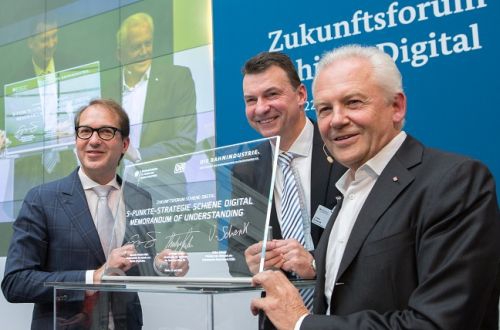The strategy has five key elements:
- Federal investment in the rail network is being ramped up to what Dobrindt describes as record levels to reach €5bn a year by 2020, which will give a boost to investment in ETCS and electronic interlockings.
- Free internet access is to be expanded at stations and on trains, so that by the end of the year free WiFi will be available on all ICE trains.
- The government will invest €75m in the development of digital applications to increase capacity on the network. Another €100m will be allocated to the early development of digital innovation.
- The government will set up the legal framework for the automatic operation of trains on the mainline network. Pilot projects will be launched under real conditions in order to combine innovative approaches. The ministry believes that gradually automating the rail network will make it more flexible, energy efficient and sustainable. The objective is to make Germany the international technology leader in rail automation.
- By 2020, digital planning and construction will become standard for all public transport infrastructure projects, and Dobrindt has developed a phased plan and launched pilot projects together with DB.
"With DB 4.0, we are working aggressively in three areas of action," Grube says. "First, at the interface with the customer to make travel easier, more convenient, more flexible and personal, secondly, to improve internal processes and procedures, and thirdly the intelligent use of new, data-based business models."
"Digitalisation creates the best railway mobility there has ever been: more climate-friendly, more secure, more economical, even quieter, and more comfortable," Schenk says. "National research programmes now clearly and powerfully support digital railway innovation."

